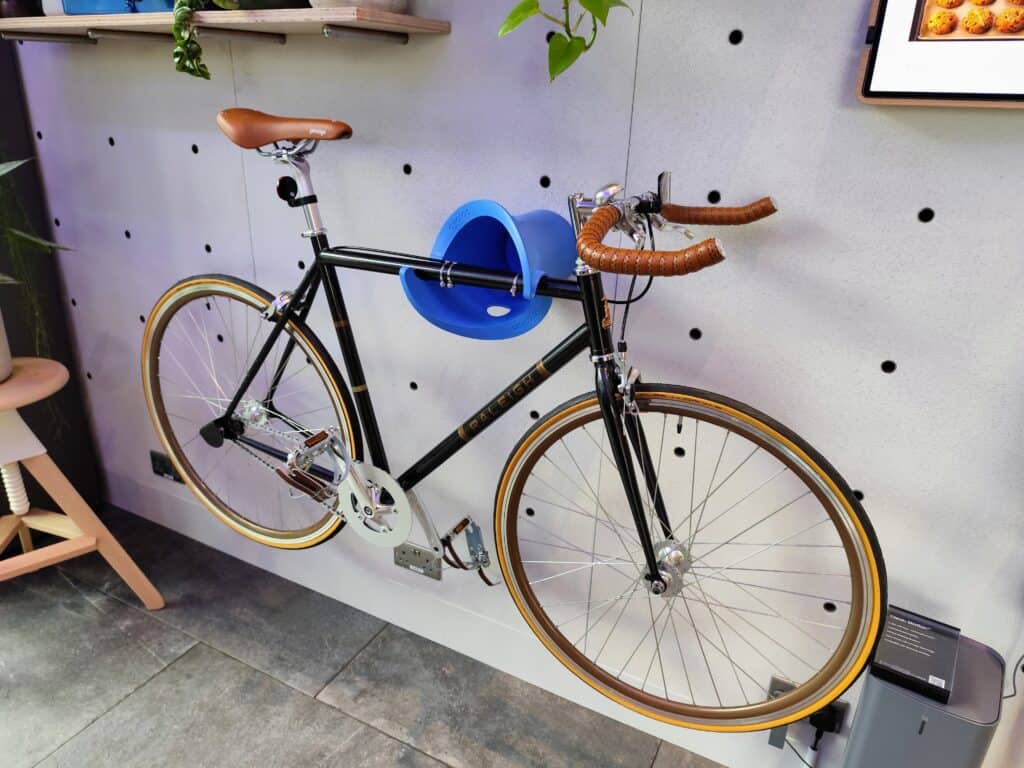Any links to online stores should be assumed to be affiliates. The company or PR agency provides all or most review samples. They have no control over my content, and I provide my honest opinion.
Back in January, I reviewed the Poco X6, which is an excellent choice for anyone with a maximum budget of £300.
In that review, I highlighted that the Redmi Note 13 Pro is almost identical but has lower RAM but has a much better camera specification.
I have been using the Redmi Note 13 Pro for the past couple of weeks to see how it stacks up against the Poco X6.
| Preview | Product | Rating | Price | |
|---|---|---|---|---|

| Xiaomi Redmi Note 13 Pro 5G Midnight Black - Smartphone... |
£289.00 | Buy on Amazon |
Redmi Note 13 Pro vs Poco X6 Specification


| Redmi Note 13 Pro | Poco X6 | |
| Display | AMOLED 6.67 inches 1220 x 2712 pixels 120Hz 500 nits (typ), 1200 nits (HBM), 1800 nits (peak) | AMOLED 6.67 inches 1220 x 2712 pixels 120Hz 500 nits (typ), 1200 nits (HBM), 1800 nits (peak) |
| Chipset | Qualcomm Snapdragon 7s Gen 2 (4 nm) | Qualcomm Snapdragon 7s Gen 2 (4 nm) |
| RAM | 8GB | 12GB |
| Storage | 256GB | 256GB |
| Rear Camera | 200 MP, f/1.7, 23mm (wide), 1/1.4″, 0.56µm, multi-directional PDAF, OIS 8 MP, f/2.2, 118˚ (ultrawide) 2 MP, f/2.4, (macro) | 64 MP, f/1.8, 25mm (wide), 0.7µm, PDAF, OIS 8 MP, f/2.2, 118˚ (ultrawide), 1/4.0″, 1.12µm 2 MP, f/2.4, (macro) |
| Front Camera | 16 MP, f/2.4, (wide) | 16 MP, f/2.4, (wide) |
| Battery | 5100 mAh | 5100 mAh |
| Charging | 67W wired, PD3.0 | 67W wired, PD3.0 |
| OS | Android 13, MIUI 14 | Android 13, MIUI 14 |
| Audio | Stereo speakers 3.5mm headphone jack | Stereo speakers 3.5mm headphone jack |
| Dimensions | 161.2 x 74.2 x 8 mm | 161.2 x 74.3 x 8 mm |
| Weight | 187 g | 181 g |
| Protection | IP54 | IP54 |
| Price | £339 RRP | £319 RRP |
Design and Build Quality

The Redmi Note 13 Pro features almost an identical design to the Poco X6, with a glass front and back with a plastic frame weighing 187g. The Poco X6 is slightly lighter at 181g and has a similar construction but a plastic back. Both phones carry an IP54 rating for limited dust and water resistance.
In terms of design, the Redmi Note 13 Pro looks more premium with its frosted glass back available in blue, black, and white colours. The rectangular camera module blends nicely into the back panel. The Poco X6 looks more basic in grey, blue, or black colours with a rougher texture on the plastic frame.


The Redmi Note 13 Pro feels better constructed, with an excellent fit and finish that belies its mid-range price tag. The flat edges offer a secure grip as well. Meanwhile, the Poco X6, while decently built, does have some creaking when pressure is applied.
Both phones retain a 3.5mm headphone jack but no microSD card slot for storage expansion. You do get dual SIM slots on each device.
Display

As mentioned earlier, both phones have the same 6.67-inch Full HD+ Samsung AMOLED display with a 120Hz refresh rate, 1200 nits peak brightness in HBM mode, and Gorilla Glass protection.
In everyday usage, you’d be hard-pressed to notice any difference between the two screens. They offer vibrant colours, excellent viewing angles, and smooth scrolling and animations enabled by the high refresh rate. Sunlight legibility is also impressive at over 500 nits typical brightness.
The one minor downside is the fixed 60Hz refresh rate in certain apps that don’t dynamically switch to 120Hz mode. So, you may notice occasional jittery scrolling in those non-optimized apps. Overall, though, both Redmi and Poco offer impressive displays for phones at this price point.
Camera

This is where the Redmi Note 13 Pro pulls significantly ahead, thanks to its higher resolution 200MP Samsung HPX main camera sensor, paired with an 8MP ultrawide and basic 2MP macro camera. Meanwhile, the Poco X6 has to make do with a more mainstream 64MP OmniVision main camera, along with the same 8MP ultrawide and 2MP macro cameras.
In daylight, the 200MP camera on the Redmi simply captures more detail, especially when you zoom in on objects. The Poco X6 shots look decent but lack fine details upon close inspection.
In low light as well, the Redmi Note 13 Pro produces images with lower noise and richer colours and retains better details, thanks to pixel binning down to 12.5MP versus 16MP on the Poco X6.
The 8MP ultrawide cameras are more evenly matched, though the Redmi’s shots still show a bit more dynamic range.
For selfies, both phones utilise a 16MP front camera that captures decent shots.
Video recording goes up to 4K 30FPS on both phones or 1080P@60FPS.
Clearly, for photography enthusiasts, the Redmi Note 13 Pro is the superior choice and one of the best camera phones available in this price segment.
It is worth noting that even though the Redmi Note 13 Pro technically has a better camera than the Honor Magic6 Lite, I found the Honor was capable of producing better shots.
Performance and Benchmarks

Under the hood, both phones utilise the same Qualcomm Snapdragon 7 Gen 2 chipset, which is manufactured on an efficient 4nm process and offers excellent performance and efficiency.
In real-world usage, both phones handle everyday tasks like web browsing, social media, messaging, calls, etc, with ease. Multitasking between several apps is smooth as well, thanks to sufficient RAM. Gaming performance is also solid for titles like Call of Duty and Genshin Impact at medium graphics settings.
For benchmarks, the Poco is slightly ahead. For Antutu:
- Redmi Note 13 Pro:
- Total: 563813
- CPU: 180551
- GPU: 116119
- Memory: 120390
- UX: 146753
- Poco X6:
- Total: 606973
- CPU: 200891
- GPU: 116852
- Memory: 142032
- UX: 147198
That gives the Poco a 7.7% advantage over the Redmi.

In Geekbench, the results were:
- Redmi Note 13 Pro: 1030/2984
- Poco X6: 1030/3011
Battery and Charging
Both Redmi and Poco managed to cram in a large 5100 mAh battery into these slim frames, which easily provides 1.5-2 days of usage per charge. Even heavy users can get a full day before needing to recharge.
67W fast charging allows you to recharge from 0 to 100% in around 45 minutes using the included charger. So you can quickly top up even while getting ready in the morning.
Battery life is certainly a strong suit for both devices. The Redmi Note 13 Pro did have a slightly better standby drain in my testing, losing just 3% overnight versus 5% on the Poco X6. So, the runtime is nearly identical in practice.
Android 13 / MIUI 14
On the software front, both phones ship with MIUI 14 based on Android 13. MIUI offers plenty of customisation options via themes and tweaks while retaining access to Google apps and services.
I would have preferred it if these phones shipped with Android 14 but as they are affordable it is forgivable compared to premium priced phones.
Some handy features include floating windows, second space, scrolling screenshots, quick ball shortcuts, and an enhanced sidebar for quick access to apps.
However, MIUI does contain ads in some regions, along with preloaded bloatware. This can be disabled but does lead to a more cluttered initial experience.
But for most mainstream users, MIUI offers a feature-packed interface with nice customisation capabilities on top of Android 13.
Price and Alternative Options
| Preview | Product | Rating | Price | |
|---|---|---|---|---|

| Xiaomi Redmi Note 13 Pro 5G Midnight Black - Smartphone... |
£289.00 | Buy on Amazon |
The Redmi Note 13 Pro has an RRP of £339 and is available directly from mi.com.
The Redmi Note 13 Pro+ is an additional £110 and benefits from 12GB RAM, double the storage at 512GB and faster storage with UFS 3.1 plus faster charging. It also uses the Dimensity 7200 Ultra chipset instead of the Snapdragon 7s Gen 2.
The Redmi Note 13 has a lower spec MediaTek Dimensity 6080, lower spec camera 108MP 1/1.67″ sensor, slower charging and a slightly low spec display. It is, however, very affordable at just £200.
The POCO X6 has a much lower spec main camera with a 64 MP 1/2″ sensor but has more RAM and storage with 12GB/512GB. This is then priced at £319.
Finally, the POCO X6 Pro is basically the same as the normal X6 but with a significantly better MediaTek Dimensity 8300 Ultra chipset.
Out of these five phones, I think the Redmi Note 13 Pro is the most appealing due to the balance of price and specs.
For an alternative brand, the Honor Magic6 Lite is well worth considering. It is priced similarly at £349. On paper, it is inferior to the Redmi Note 13 Pro. The chipset and camera are lower spec. It has an impressively large battery but slower charging. In reality, I found the camera performance better, and it is a more attractive phone. While the chipset is lower spec, it is quite a small difference.
Overall
I think the Redmi Note 13 Pro is an excellent budget phone and well worth the extra £20 over the POCO X6 for the improved camera, even if you do get less RAM/storage.
The 200MP camera can produce excellent photos, and it is amazing that you can get a phone that is so affordable but still has a great camera.
So, in the end, for £339, the Redmi Note 13 Pro hits a sweet spot, combining great camera hardware, fast charging, smooth everyday performance and long battery life. Making it easy to recommend for shoppers on a budget.
Redmi Note 13 Pro Review
Summary
The Redmi Note 13 Pro is an excellent affordable phone and I personally think it is worth the extra £20 over the Poco X (unless you never/rarely use the camera).
Overall
90%-
Overall - 90%90%
Pros
- Good overall specification and real-world performance for the price you pay
- Great camera for a phone this affordable
Cons
- Quite a lot of bloatware
I am James, a UK-based tech enthusiast and the Editor and Owner of Mighty Gadget, which I’ve proudly run since 2007. Passionate about all things technology, my expertise spans from computers and networking to mobile, wearables, and smart home devices.
As a fitness fanatic who loves running and cycling, I also have a keen interest in fitness-related technology, and I take every opportunity to cover this niche on my blog. My diverse interests allow me to bring a unique perspective to tech blogging, merging lifestyle, fitness, and the latest tech trends.
In my academic pursuits, I earned a BSc in Information Systems Design from UCLAN, before advancing my learning with a Master’s Degree in Computing. This advanced study also included Cisco CCNA accreditation, further demonstrating my commitment to understanding and staying ahead of the technology curve.
I’m proud to share that Vuelio has consistently ranked Mighty Gadget as one of the top technology blogs in the UK. With my dedication to technology and drive to share my insights, I aim to continue providing my readers with engaging and informative content.
Last update on 2025-07-02 / Affiliate links / Images from Amazon Product Advertising API































